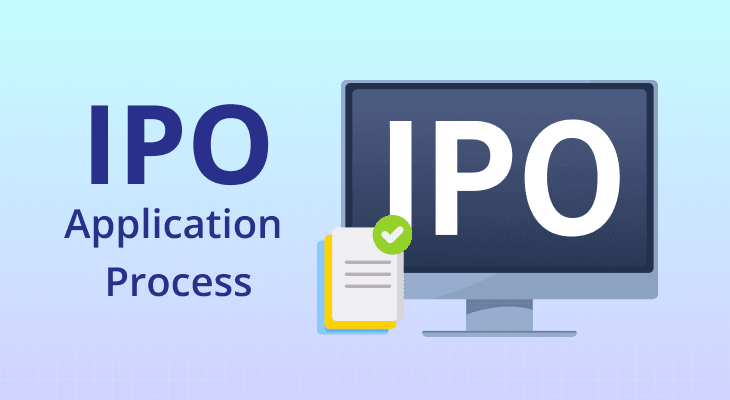
Top Strategies for Choosing the Best IPOs to Invest In
Investing in the IPO share market allows you to buy shares of a company at an early stage and potentially benefit from its growth. While this can be a lucrative opportunity, choosing the right IPO investment requires careful analysis and a strategic approach. Over 50 IPOs were launched in India in 2023 alone. With so many available options, it can be challenging to determine which IPO to invest in. This guide will help you navigate the process of identifying the best IPOs to invest in and ensure you are empowered to make a smart IPO investment decision.
Identifying the Right IPO for Investment
Investing in an IPO can be rewarding, but it's crucial to do your research and conduct thorough due diligence. Here's a step-by-step guide to help you find the best IPO to buy.
Carefully Examine the Draft Red Herring Prospectus (DRHP)
The first, and possibly the most crucial, step in assessing whether an IPO is a smart investment is to examine the company’s Draft Red Herring Prospectus (DRHP). The DRHP is a comprehensive document filed by companies planning to go public. It contains vital information about the company's financials, business model, risks, and objectives. Within this:
Understand The Financials
Carefully go through the company's balance sheets, income statements, and cash flow statements. Look for consistent revenue growth, healthy profit margins, and manageable debt levels. A company with a strong and proven financial track record is often a more stable investment.
Assess Risks
Every business faces risks, and the DRHP outlines these potential challenges in detail. These can include market competition, regulatory hurdles, operational challenges, and economic factors. By understanding these risks, you can gauge whether the company has effective strategies to mitigate them. This section also helps you prepare for potential volatility in the company's performance.
Regulatory And Legal Information
Review the regulatory and legal disclosures in the DRHP. This includes any ongoing or potential legal issues that could impact the company's operations or financial performance. Understanding these aspects helps you assess the legal environment the company operates in and its compliance with industry regulations.
Competition And Market Position
Understand how the company generates revenue, its key products or services, and its target market. Look for competitive advantages that set the company apart, such as proprietary technology, a strong brand, or a large customer base. Additionally, evaluate the company's market position and potential within its industry. Understanding the competitive environment helps you gauge the company's potential for sustained growth and profitability.
Management And Governance
The DRHP provides information about the company's management team and governance structure. Strong, experienced leadership is crucial for executing the company's strategy and navigating market challenges. Look for a management team with a proven track record in the industry.
Use Of IPO Proceeds
The DRHP will specify how the company plans to use the funds raised from the IPO. Evaluate whether these plans are realistic and aligned with long-term growth. For instance, funds earmarked for innovation and expansion may indicate a growth-oriented strategy, while a focus on debt repayment might suggest a more conservative approach.
Investigate the Reasons Behind the IPO
Understanding why a company is going public can provide insights into its long-term prospects. There are various reasons why a company might decide to launch an IPO, and not all of them are positive from an investor's perspective.
Expansion Plans
One of the most common reasons for an IPO is to raise funds to finance growth initiatives. Companies may need capital to expand their operations, enter new markets, or develop new products. When a company is raising funds for expansion, it often indicates a growth phase, which could potentially lead to higher returns for investors. However, you should evaluate whether the company's growth plans are realistic and achievable.
Debt Reduction
Some companies go public to raise funds to pay off existing debt. While reducing debt can improve a company's financial health and reduce interest expenses, it's essential to assess the overall debt level and how it has impacted the company's operations. A high debt load could be a red flag, indicating financial instability.
Exit Strategy
In some cases, existing investors or promoters may use an IPO as an exit strategy. Be cautious if a significant portion of the IPO proceeds is being used to buy out existing stakeholders rather than being reinvested in the business. If key insiders are selling a large portion of their holdings, it might indicate a lack of confidence in the company's future prospects.
Brand Recognition And Credibility
Going public can enhance a company's brand recognition and credibility. A public listing can increase transparency, attract top talent, and improve relationships with customers and suppliers. While these factors can positively impact the company's growth, it's essential to evaluate whether the primary motivation for the IPO is to build brand prestige rather than focusing on fundamental business growth.
Acquisitions And Strategic Investments
Some companies raise capital through an IPO to fund acquisitions or strategic investments. This can be a positive sign if the acquisitions are expected to create synergies, expand the company's market presence, or enhance its competitive advantage. However, you should scrutinise the company's acquisition history and strategy to ensure they have a track record of successful integrations and value creation.
Legal And Regulatory Requirements
In some cases, regulatory or legal requirements might influence a company's decision to go public. For instance, companies in specific industries might need to adhere to particular regulations that require public listing. Understanding these requirements can provide context for the IPO and help you evaluate the regulatory environment's impact on the company's operations.
Grasp the Business Model of the Issuing Company
A thorough understanding of the company's business model is essential in evaluating its future prospects. Analyse how the company generates revenue, its competitive advantages, and its growth strategy.
Revenue Streams
Identify the primary sources of revenue and their sustainability. Diversified revenue streams can indicate a stable business model.
Competitive Advantage
Determine the company's unique selling points (USPs) and how it stands out in the market. This could be in the form of proprietary technology, strong brand recognition, or efficient operations.
Growth Strategy
Examine the company's plans for future growth. This includes expansion plans, product development, and market penetration strategies. A clear and feasible growth strategy is a positive indicator.
Assess the Valuation of the IPO
Valuation plays a critical role in determining whether an IPO is a good investment. Overvaluation can lead to poor returns, while undervaluation can provide lucrative opportunities.
Price-To-Earnings Ratio (P/E)
Compare the P/E ratio of the IPO with that of similar companies in the same industry. A significantly higher P/E ratio may indicate overvaluation.
Price-To-Book Ratio (P/B)
The P/B ratio compares the market value of the company to its book value. A lower P/B ratio might suggest the IPO is undervalued.
Market Comparisons
Look at how similar companies are valued in the market. This comparison can help you determine if the IPO is priced fairly.
Avoid Getting Caught in the Hype
IPO investments often come with a lot of buzz and hype, especially if the company is well-known or backed by prominent investors. However, making investment decisions based solely on hype can be risky.
Media And Analyst Reports
While media coverage and analyst reports can provide useful information, it's important to do your own research and not rely solely on these sources.
Investor Sentiment
Be wary of overly optimistic predictions. High demand can drive up the IPO price, but it doesn't necessarily mean the company is a good investment.
Rational Decision-Making
Stick to your investment strategy and avoid making impulsive decisions based on market excitement. Ensure that your decision is based on solid analysis and aligns with your long-term investment goals.
In Summation
Finding the best IPO to invest in requires a combination of thorough research, careful analysis, and strategic thinking. By examining the DRHP, understanding the reasons behind the IPO, analysing the business model, assessing the valuation, and avoiding the hype, you can make informed decisions and increase your chances of success in the IPO share market.
Investing in IPOs can be a smart investment strategy when approached with diligence and caution. By following these guidelines, you can navigate the complexities of the IPO market and identify opportunities that align with your financial goals and risk tolerance.
FAQ
What is an IPO, and how does it work?
An IPO (Initial Public Offering) is the process through which a private company goes public by offering its shares to investors and traders for the first time. It allows the company to raise capital from public investors, and the shares start trading on the stock exchange.
How can I participate in an IPO?
To participate in an IPO, you need to have a demat and trading account with a reputed and reliable brokerage firm such as m.Stock by Mirae Asset. You can apply for IPO shares through your broker's online platform or through an application supported by a blocked amount (ASBA) facility provided by your bank.
What should I look for in the DRHP before investing in an IPO?
In the DRHP, focus on the company's financials, business model, risk factors, and objectives for raising capital. This information will help you assess the company's potential for growth and stability.
Why is the valuation of an IPO important?
Valuation determines whether the IPO is priced fairly. A high valuation may indicate overpricing, which can limit future gains, while a low valuation might suggest an opportunity for higher returns.
What are the risks associated with IPO investments?
IPO investments carry risks such as market volatility, potential overvaluation, and the uncertainty of the company's future performance. It's essential to thoroughly research and understand these risks before investing.
How can I avoid the hype surrounding an IPO?
Avoid making decisions based solely on media buzz or analyst predictions. Conduct your own research, stick to your investment strategy, and ensure that your decision is based on fundamental analysis.
What role does the company's business model play in your IPO investment decision?
Understanding the business model helps you evaluate the company's revenue streams, competitive advantages, and growth strategy. A robust and sustainable business model is crucial for long-term investment success.
Can IPO investments be a part of a long-term investment strategy?
Yes, IPO investments can be part of a long-term strategy if the company shows strong growth potential, sound financial health, and a solid business model. Long-term investors should focus on the company's fundamentals and growth prospects.


